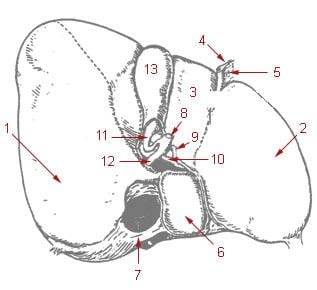Dorlands/Elsevier d_29/12314882 FMA 14668 | TA A05.8.01.061 | |
 | ||
Latin ductus hepaticus communis | ||
The common hepatic duct is the duct formed by the convergence of the right hepatic duct (which drains bile from the right functional lobe of the liver) and the left hepatic duct (which drains bile from the left functional lobe of the liver). The common hepatic duct then joins the cystic duct coming from the gallbladder to form the common bile duct. The duct is usually 6–8 cm length.
Clinical significance
The hepatic duct is part of the biliary tract that transports secretions from the liver into the intestines. It carries more volume in people who have had their gallbladder removed.
It is an important anatomic landmark during surgeries such as gall bladder removal. It forms one edge of Calot's triangle, along with the cystic duct and the cystic artery. All constituents of this triangle must be identified to avoid cutting or clipping the wrong structure.
There is some normal anatomic variation of the diameter
The common hepatic duct is about 6mm in diameter in adults, with some variation. A diameter of more than 8 mm is regarded as abnormal dilatation, and is a sign of cholestasis.
